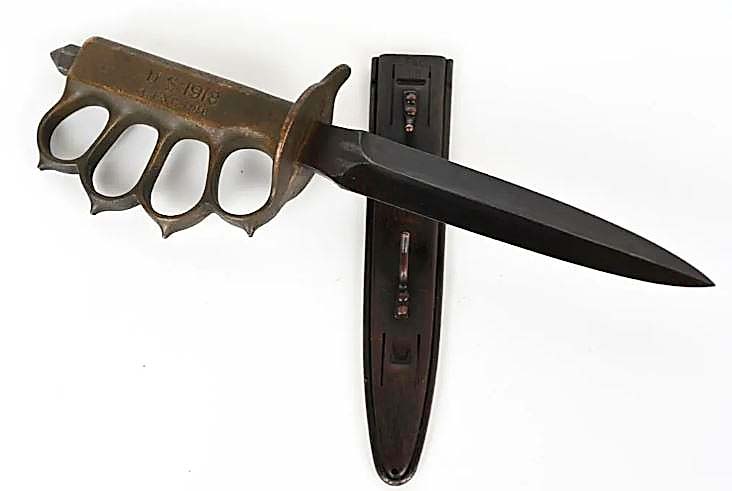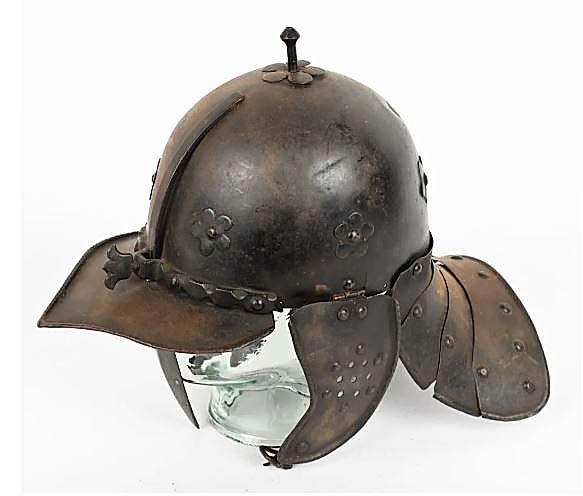
A remnant of a $20 bank note, part of the $200,000 ransom paid in 1971 to skyjacker D.B. Cooper and later found by 8-year-old Brian Ingram, eclipsed its $400/600 estimate to finish at $4,920.
Review by W.A. Demers
WILLOUGHBY, OHIO – A remnant of a $20 bank note, part of the $200,000 ransom paid in 1971 to skyjacker D.B. Cooper and later found by 8-year-old Brian Ingram was notable in Milestone Auctions’ May 4 spring discovery military sale, eclipsing its $400/600 estimate to finish at $4,920. Ingram famously discovered three bundles of the decomposing currency in 1980 along the Columbia River while on vacation camping with his family near Vancouver, Wash. The Series 1969 $20 Federal Reserve note fragment came with a PCGS Currency certificate identifying the bill. Note fragments with visible serial numbers were traced to the FBI’s original listing for the ransom notes.
The overall sale totaled approximately $300,000, and of the 382 lots, only 85 failed to find buyers.
A Japanese katana sword with wood surrender tag gave it up with a $2,952 bid. The 36½-inch blade had a 21-inch cutting edge and its iron tsuba was decorated with gold relief. The wood surrender tag was signed on both sides, and the wood saya was also signed. Included with the lot was a silk storage bag.

A Japanese katana sword with wood surrender tag, selling for $2,400, featured a 36½-inch blade with a 21-inch cutting edge. Its iron tsuba was decorated with gold relief and the wood surrender tag was signed on both sides.
Fetching $2,030 was a World War I US Model 1918 “Knuckle Duster” trench knife with solid brass handle made by Landers, Frary and Clark (marked “L.F.&C.” on the handle and on the scabbard). It featured spiked knuckle guards and “Skull crusher” spike pommel.

Fetching $1,650 was a World War I US Model 1918 “Knuckle Duster” trench knife with solid brass handle made by Landers, Frary and Clark.
The top Civil War item was a US officer’s 2nd Artillery slouch hat. It was made of high-quality wool felt with a 1/4-inch woven silk tape band along the brim and a 7/8-inch black silk ribbon affixed to the base of the approximately 3½-inch creased crown. Further embellishments in the silk-lined hat were a twisted gold bullion pattern hat cord with acorns. Overall, it was deemed a scarce piece of Civil War headgear in good condition and sold for $1,958.

A US officer’s 2nd Artillery slouch hat from the Civil War era was a survivor, made of high-quality wool felt with a 1/4-inch woven silk tape band along the brim and a 7/8-inch black silk ribbon affixed to the base of the approximately 3½-inch creased crown. It sold for $1,958.
From the English Civil War period came a lobster tail siege helmet made of steel. The helmet had a rounded skull-piece, which was sometimes fluted. Catalog notes explain that the skulls of English-made helmets were often formed from two sections, joined by a raised comb running from front to back, whereas helmets manufactured on the continent typically had skulls raised from a single-piece of metal. Further, the helmet had a laminated single-piece of ridged plate to protect the back of the head and neck. It was said to resemble the tail of a lobster. Estimated $800-$1,200, this example did better, finishing at $1,845.

From the English Civil War period came a steel lobster tail siege helmet with rounded skull-piece. With a laminated single piece of ridged plate to protect the back of the head and neck, it was named because of its resemblance to a lobster tail. It finished at $1,500 against an estimated $800-$1,200.
World War I US Air Service tunics are notable, but especially so when they are named. One such garment from the US Air Service’s 1917 Aviator Wing sporting a bullion badge and adorned with a 3rd Army bullion shoulder sleeve patch, three gold overseas stripes, US and Signals Officers collar disks and Lieutenant Colonel officers rank oak leaves earned $1,292. The tunic, roughly a size 40 and in excellent condition, had its interior named to Lieutenant Colonel Daughtery and was tailored by D. Klein & Bro. of Philadelphia.

From the US Air Service’s 1917 Aviator Wing, sporting a bullion badge and adorned with a 3rd Army bullion shoulder sleeve patch, three gold overseas stripes and more, this tunic named to Lieutenant Colonel Daughtery earned $1,292.
Prices given include the buyer’s premium as stated by the auction house. The firm’s next sale will be an advertising-themed event, slated for June, date to be announced. For information, 440-527-8060 or www.milestoneauctions.com.




